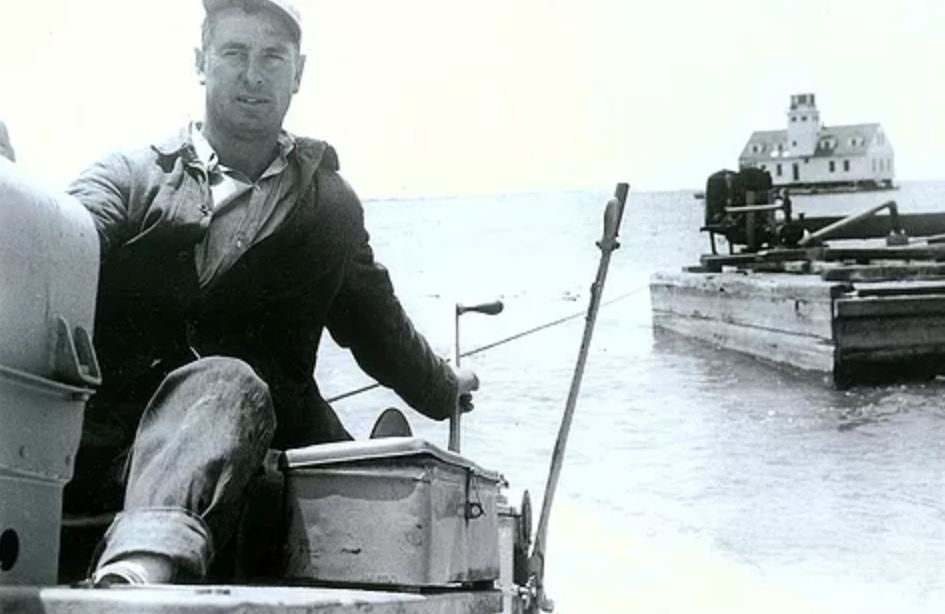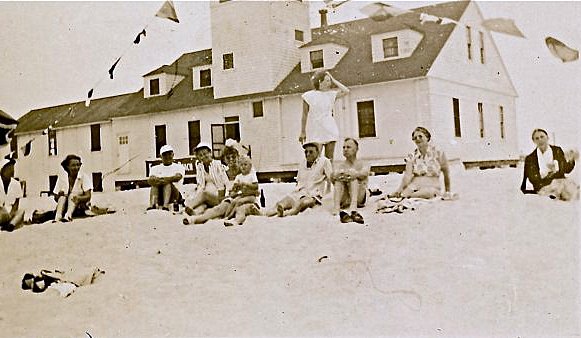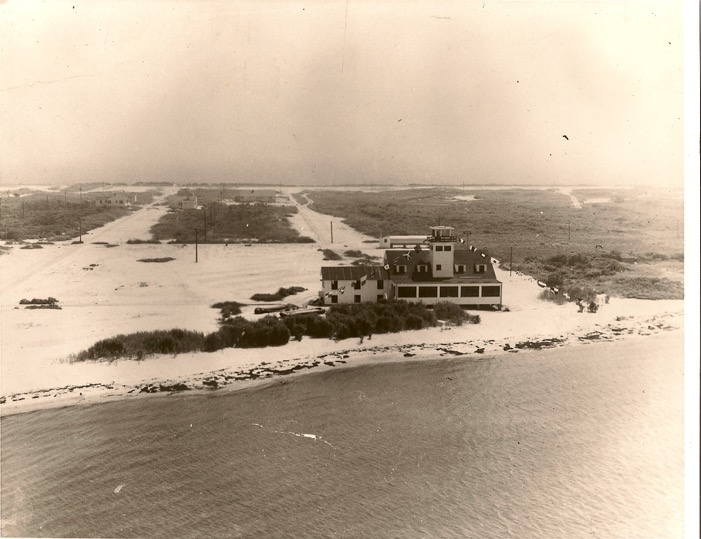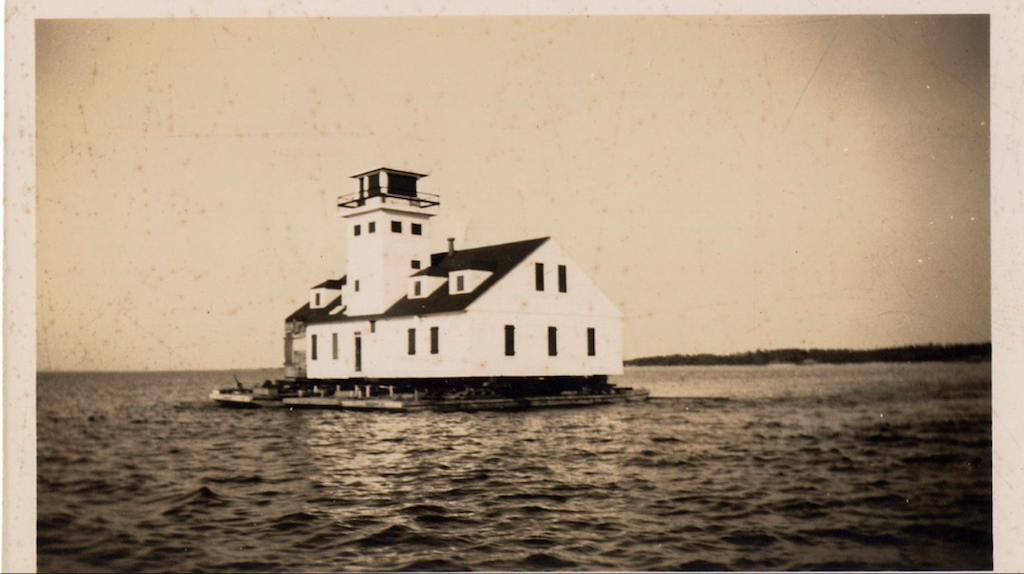Originally built in 1913 as the Blue Point US Life-Saving Station House (in Water Island, Brookhaven Town), the main structure of the Summer Club Clubhouse was relocated to the Summer Club by barge in 1947. The clubhouse is significant for its original design and use as the Blue Point Station House, as well as its adaptive reuse as the Summer Club’s community center for over seventy years. Unfortunately, the clubhouse is now threatened by intensifying erosion and flooding, reflecting the urgent problems rising sea levels bring to Long Island’s iconic waterfront structures.

The Blue Point Station House (now the Summer Club Clubhouse) was built in 1913 according to architect Victor Mendeleff’s 1910 Lorain Design plans created for the US Life-Saving Service. Combining elements of both Shingle- and Colonial Revival-style architecture, Mendeleff’s Lorain Design was used for lifesaving stations in Ohio, Michigan, Virginia, and New York. After being deactivated in 1936 and abandoned in 1944, the station house was purchased and relocated by the Fire Island Summer Club in 1947 to serve as a clubhouse for community members.
In May 1947 the Blue Point Station House (now the Summer Club Clubhouse) was relocated by barge to the Fire Island Summer Club community. Courtesy of the Summer Club.


The rehabilitated former lifesaving station has served as the Summer Club Clubhouse for over seventy years—yet distinctive architectural features of the original structure endure, such as shingle cladding, a rectangular plan, and side gable roofs. Most notably, the old station’s square three-story watchtower remains a prominent feature of the clubhouse’s bayfront façade and a familiar landmark for those traveling by ferry between Fire Island and Long Island’s south shore.

Status: Threatened
The Summer Club Clubhouse is threatened by the effects of sea level rise, including severe flooding and coastal erosion. Repetitive flooding by the Great South Bay creates various preservation issues for the structure from mold to warping. Ongoing erosion can cause instability of the foundations and lead to dangerous structural problems.
Preservation Recommendations:
Addressing the damaging impacts of sea level rise at historic properties like the Summer Club Clubhouse requires policymakers, government agencies, property owners, and preservationists to be flexible and willing to consider alternative solutions. Potential solutions may include moving buildings, raising them, or using innovative building materials. Above all, we must be ready to welcome nontraditional preservation strategies. “To protect the old,” as the National Trust for Historic Preservation observes, “we must embrace the new in the face of forces bigger than ourselves.” Preservation Long Island is working closely with the Summer Club board to develop an environmentally and historically sensitive plan to protect the clubhouse while raising awareness about the challenges faced by historic sites threatened by sea level rise.


Preservation Long Island’s 2019 Endangered Historic Places Program is made possible in part by a grant from the New York State Council on the Arts with the support of Governor Andrew M. Cuomo and the New York State Legislature.




